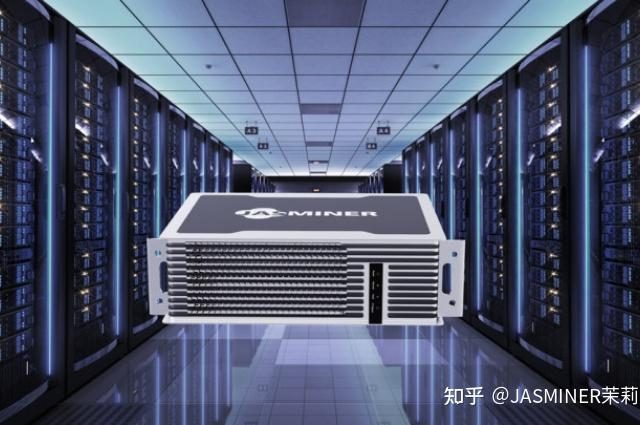TECHNOLOGY PAPERS
The semiconductor industry requires increasing manufacturing precision in every new generation of semiconductor chips. The entire design and development process of wafers, silicon dice, and packaging requires nanometer precision. Piezoelectric based components can deliver sub-nanometer precision and the micron level positioning that is required throughout the semiconductor manufacturing process.
This technical whitepaper summarizes the significance of piezoelectric technology in the industry, with a focus on the individual manufacturing steps. Basic piezo theory, a market study, and future cross-collaboration suggestions are also included. Both highly technical and semi-technical engineers in the semiconductor industry will appreciate this whitepaper.
Liquid filtration primarily uses polymer membrane technologies as selective barriers that permit certain constituents in a fluid stream to pass through while retaining or rejecting others. A common misconception about membranes is that they are simply sieves that have one consistent pore in one barrier layer that retains all contaminants larger than the pore size. The selection of a membrane architecture is one critical factor in designing your unique contamination control solutions.
Read the paper to learn more.
This paper describes the study of the fluorescent polystyrene nanoparticles (G25) size distribution (PSD) using different techniques such as the Atomic Force Microscope (AFM), the Scanning Mobility Particle Sizer1 (SMPS), Dynamic Light Scattering (DLS), and Cryo-Electron Microscopy (Cryo-EM).2 Among these tools, Cryo-EM is confirmed as the most powerful structure determining technique that is well-suited to studying polymer nanoparticles in solution.
Read the paper to learn more.
Maximize Water Recovery With Efficient Waste Stream Monitoring
November 29, 2023
With the growing concern of water scarcity, many countries and companies are adopting new sustainability laws, policies, and regulations. Governments are pushing semiconductor fabs and foundries to recycle over 85% of wastewater. This challenge is driving semiconductor manufacturers to improve wastewater reclaim, recycle, and reuse efficiency.
Read this white paper to discover how continuous, real-time measurement and control of conductivity and total organic carbon can help you efficiently monitor wastewater streams for increased water recovery.
Green Microelectronics Manufacturing With Water-efficient TOC Monitoring
November 10, 2023
The microelectronics industry is facing a challenge due to its high demand for water resources. With each fab requiring thousands of cubic meters of ultrapure water (UPW) per day, the industry must find ways to reduce water consumption and increase water recovery, while maintaining UPW quality.
Read this white paper on how water-efficient, real-time total organic carbon (TOC) analysis can reduce water usage in wafer manufacturing and increase water recovery with continuous monitoring of segregated wastewater streams.
Take the Struggle Out of Data Wrangling With JMP®
October 24, 2023
Data preparation: the unglamorous, time-consuming, laborious, and sometimes dreaded “dirty work” of statistical investigations. Thankfully, JMP users can perform wrangling operations within one software environment, without having to hop off and onto different platforms.
Robert Carver, Professor of Business Administration at Stonehill College, provides a detailed introduction to data preparation, along with its four other themes. Learn how to conduct successful analyses through a disciplined process.
Solutions for Industrial Water Reuse
August 31, 2023
Water scarcity is a growing concern, making water reuse and industrial water treatment essential for a sustainable future.
The white paper by Grundfos focuses on Industrial Water Reuse and highlights the importance of water treatment in modern industrial societies, with a special focus on water consumption in the industry and its impact on global water consumption. By describing the general cycle of water usage and treatment, including wastewater transport, biological treatment, wastewater release, chemical and physical treatment, the paper introduces all the processes involved in water treatment and presents Grundfos’ optimized solutions for intelligent, digital and eco-friendly production processes.
Discover how challenges in ultrafiltration applications, such as changing raw water conditions and demand fluctuations, can be addressed with modern technology and variable frequency drives (VFDs) to ensure energy efficiency and economical operation.
Nearly everything that goes into a fab – liquids, gases, and ambient air – has the potential to introduce contaminants that will impact performance. Each process area has a unique sensitivity to contaminants as well. It can be extremely difficult to remove targeted contaminants without disrupting the composition of semiconductor process materials.
A targeted removal model identifies each contamination threat, or threats, while maintaining the working balance of a material. When suppliers, equipment manufacturers, components makers, and fabs collaborate across the supply chain, they can create solutions that shorten yield ramps, limit maverick excursions, and improve device performance.
Semiconductor fabs looking to gain more control over their supply chain and capture margin are now selling direct to manufacturers. But is your foundry prepared to optimize payments and invoicing to serve this distribution shift? The good news is you don’t have to navigate the influx of invoices and cross-border payments alone. TreviPay has helped some of the biggest global brands, including a Fortune 500 semiconductor giant, sell direct to hundreds of business buyers located across the globe. Download the all-in-one guide and case study to learn how to future-proof your payments strategy to sell direct and emerge as an industry leader.
A world-leading semiconductor fabricator required a resistivity sensor that would surpass the performance of currently available instruments. METTLER TOLEDO Thornton collaborated with the fabricator on a sensor that sets a new standard in resistivity measurement. The result is the UPW UniCond™, a resistivity sensor with significantly better temperature compensation, signal stability, and environmental isolation than previously available. To find out more about the testing performed by the fabricator and the results – read the case study.
From Ingot to Packaging, Quality is Crucial
May 1, 2023
The semiconductor industry can look forward to boom times over the coming years as demand continues its upwards trajectory and the U.S. increases domestic manufacturing. Yet chipmaking is challenging work. Even the smallest defect can render a wafer and its hundreds of individual chips unusable, which is why manufacturers need the very best process and quality control technology available. Examples include acoustic sensors to monitor machine components during the slicing and grinding processes and infrared devices that use light to measure wafer thickness and more. This Technology Paper provides an overview of this critical manufacturing sector and offers guidance on ways to keep product quality under strict control.
Analytical Excellence for Semiconductor Manufacturing
March 27, 2023
The quality of semiconductor chips is of utmost importance to ensure their smooth downstream technological applications. Both front and back-end manufacturing processes need extensive monitoring and quality control with multiple analytical techniques to meet the required standards. Learn about analytical competence combined with software and service offerings by METTLER TOLEDO for safe, efficient, cost-effective manufacturing processes and laboratory analysis in the semiconductor industry.
A New Spin on Spatial ALD Metrology
September 15, 2022
A revolution is taking place in ALD processing and in semiconductor terms, it’s a fundamental change in the way materials are deposited (and etched in the case of ALE). Spatial ALD is emerging as the critical technology for advanced selective processing of memory and logic processes. However, optimizing spatial ALD to realize its full potential is challenging and is requiring novel metrology solutions to deliver consistent results.
What’s your plan for more sustainable Fabs? Under pressure to reduce their environmental footprint, semiconductor business leaders are charting a course to strengthen their green credentials.
But which approaches are most effective? What brings the fastest improvements and what goes on the medium- and long-terms sustainability roadmap?
In this article, Schneider Electric’s semiconductor segment VP Dallal Slimani answers fundamental questions about how semiconductor leaders can overcome barriers to their greener future, and strategies and technologies with proven ROI.
Piezoelectric dynamic force measurement technology is an effective tool for monitoring and controlling semiconductor packaging processes. High-resolution force measurements make mechanical stress and process deviations visible, thus optimizing machine performance.
After setting out the principles of piezoelectric force measurement, this paper compares piezoelectric and strain gauge technologies, and describes the components of the industrial measuring chain. The author explains practical aspects and good practices to achieve best results from measurements. The paper concludes by highlighting the numerous benefits of this technology, such as higher quality, reduced failure rates, optimized machine speed and accuracy, traceability, and use of Big Data.
Not All Greenhouse Gases Are the Same
Biggest Benefits Come From Ranking Greenhouse Gas Reduction Impact
June 7, 2022
Semiconductor manufacturers face big challenges to reach their sustainability goals, and to reduce greenhouse gas emissions to the levels demanded both by legislation and by their customers. For scope 1 emissions capturing by-products and waste gases is extremely difficult, as process chemistry is highly diverse. Fab operators need to focus on the biggest contributors to climate change, and specifically on the common etch and clean gas, NF3 , which is over 17,200 times more potent as a greenhouse gas than CO2. By using mass spectrometry to reduce the time spent on NF3-based clean cycles by up to 75%, operators can make big cuts in their NF3 emissions while also increasing throughput and reducing costs.
Liquid Flow Controllers (LFCs) are frequently used as part of a liquid delivery system designed to vaporize liquid precursors for Chemical Vapor Deposition or Atomic Layer Deposition. These state-of-the-art processes frequently require a higher performing LFC to provide enhanced process stability, capability and reliability. Of key importance to newer processes using shorter processing times is the response/stabilization time of the LFC.
It’s challenging to balance competing priorities like lowering new production introduction (NPI) time and cost against delivering zero-defect chips with high complexity. Successfully meeting them depends on reducing the high degree of fragmentation and lack of digitalization in design and manufacturing systems. The lack of digitalization hinders data integrity, secured intellectual property (IP), re-use and end-to-end traceability while accelerating technical debt within companies.
The Impact of TOC & Resistivity in Semiconductor UPW Systems
March 10, 2022
With increased demand for more chips per wafer and critical ultrapure water (UPW) monitoring necessary to be able to keep up, accurate real time and on-line measurement has never been more important. As the semiconductor industry continues to rapidly advance, ensuring water purity and the ability to accurately monitor TOC and resistivity at sub ppb levels is key to improving product quality and maximizing output. These are critical parameters that must be monitored online and in real-time and provides the process control able to keep up with the increasing requirements for UPW systems in microelectronics.
Optimizing Electronic Design Automation (EDA) with QCT
March 2, 2022
Driven by the increasing demand for new chips across almost every industry, semiconductor design teams and manufacturers are facing increased complexity while having to bring new products to market faster than ever before.
Explore this custom e-book to learn about the chip design process, crucial challenges for the semiconductor industry and EDA workloads, how VDI fits into the picture, and how QCT’s hardware solutions, powered by Intel, can help.
Semiconductor companies may have internal labs for calibration, but when it comes to calibrating sophisticated, production-dependent benchtop equipment, it’s important to calculate the ROI to ensure you’re employing the smartest calibration strategy for maximum equipment availability, uptime, and cost savings. This paper will help you understand the factors to consider, and why, and assist you in creating an initial ROI calculation for your calibration program.
This whitepaper includes access to a free, downloadable ROI calculator. Access this whitepaper and start crafting a strategic calibration strategy today for all your benchtop T&M equipment.
Smaller, thinner, higher performance semiconductor devices aren’t just required for mobile phones and tablets. As applications across market sectors aim to expand function, semiconductor packages within numerous products are challenged to maintain – or reduce – dimensions even while capability is increasing. At the same time, integration of these devices into demanding environments such as automobiles dictates extreme reliability. In fact, the automotive ecosystem is one of the most challenging, but also one which is becoming increasingly dependent on electronics for continuous innovation. Within vehicles, infotainment functionality, fuel efficiency, and safety-enabling advanced driver assistance systems (ADAS) must operate in harmony and electronics – namely semiconductors – are making this all possible. The increasing electrification of vehicles, along with connectivity and mobility trends have the potential to expand the semiconductor content in automobiles by as much as ten-fold. (1) However, the convergence of miniaturization and added function within the automotive industry is testing reliability and processing norms.
The semiconductors that will enable fully automated transportation rely on the development of unique architectures, novel materials, and the ability of semiconductor manufacturers to increase the number and speed of continuous improvement opportunities. Applying these innovations at the pace of new technologies requires all members of the semiconductor ecosystem to pause momentarily, assess their capabilities, and collaboratively plan for success. To build clarity into the ecosystem, we propose an interdisciplinary approach to best understand the entire process of creating a new semiconductor device. In this paper, we illustrate anonymized case studies and fab benchmarks to bridge the gap between design and process engineering that enable best practices for automotive related semiconductor manufacturing.
Maximizing yield in semiconductor chip production is a formidable challenge. Atomic layer deposition (ALD) is a critical process for depositing thin material layers on the shrinking and more complex device geometries associated with current and future process nodes. ALD processes use pulsed chemical dosing to build up a material layer. To achieve atomic-scale precision and high production yield, the systems that deliver these pulsed chemical doses must be increasingly precise. This article will review the basic elements of a pneumatic control system and ALD process valves and detail considerations to achieve fast and consistent valve response and ALD doses.
Silicon (Si) is the most used semiconductor and is a critical element for producing circuits found in everyday electronics. This work demonstrates the coupling of an IAS Expert_PS VPD (vapor phase decomposition) system with the NexION® 5000 ICP-MS, delivering a fully automated, reliable solution for the determination of metallic impurities introduced during Si wafer production, thanks to to the ICP-MS’ sensitivity and ability to remove spectral inferences when performing trace analysis in combination with a platform that eliminates manual operation and chemical exposure to operators to prevent Si wafer contamination.
Temperature Solutions for Semiconductor Production
October 19, 2021
As a division of the Fluke Corporation, Fluke Process Instruments acts as the umbrella brand for industry leaders Raytek, Ircon and Datapaq. Our non-contact temperature monitoring and thermal profiling solutions are customized for the most unique applications and are designed to perform in the most demanding environments. We provide our customers with tools that allow for a fully automated process so production can continue around the clock while they get the temperature data needed to help ensure product quality, process control and more.
While many different applications make up the entirety of the semiconductor industry, consistent and accurate temperature monitoring and control plays a crucial role in nearly every step of the process. That’s why multiple temperature measurement options are offered and paired with intuitive software solutions, so you can confirm products are evenly heated or soldered correctly with fewer rework rates, ensure oven processes are operating at maximum efficiency and much more. Our support lasts far longer than any purchase, with ongoing service available from product experts that help you troubleshoot, configure, and grow as your process does.
Particles, Processes, and Planning: Synergies to Improve CMP Yield
October 17, 2021
The slurry is the most critical and expensive part of the process and determines the selection of all other chemicals and equipment. The interactions are complicated, with the possibility that improvement in one aspect might come at a detriment to another and not result in the expected yield. This white paper explores the entire CMP process, including post-CMP cleaning, to identify potential sources of contamination and propose synergistic solutions to minimize yield risk.
The photonic band structure of periodically arranged media can be controlled by physical features much smaller than the optical diffraction limit. Furthermore, photonic effects can be used to enhance the emission intensity and direction of light-emitting devices. We present a methodology to directly correlate array structure to the photonic band structure using the cathodoluminescence (CL) signal generated by a sample in the scanning electron microscope. In this experiment, we record the wavelength- and angular-distributions of luminescence to determine the photonic effects imposed on a microLED pillar array and determine the emission band structure in the energy-momentum basis.
Field Digital Demand Generation Fault Hunter AN AMO WW Q421
October 14, 2021
Quickly find and identify hidden errors. Finding hidden signal errors with your oscilloscope has never been easier. Discover the first-of-its-kind Fault Hunter capability that characterizes your signal and automatically finds errors. Fault Hunter helps you perform root cause analysis and save hours of test time with just a few clicks. Download Keysight’s “Quickly Find and Identify Hidden Signal Errors” application note to learn more.
This work describes the analysis of 46 elements in IPA, PGMEA and NMP using the NexION 5000 ICP-MS which provides exceptionally low background equivalent concentrations (BECs) and outstanding detection limits (DLs), enabling the semiconductor industry to quantify contaminants in acidic, basic, and organic chemicals at extremely low levels.
Wafer-level chip scale packages (WLCSPs) certainly rank among the key enablers of smaller, thinner, higher functionality devices that are driving advances in mobility, integration and expansive connectivity (IoT). Undoubtedly, the mobile phone and tablet markets have been the primary catalyst for the growth in WLSCP packages in recent years, though there are several other applications that benefit from the thinner, higher-density ball count capabilities of modern-day WLCPS. No doubt mobile phones and tablets will remain important consumers of WLCSPs, but the trend toward prolific connectivity through wearable devices, among other technologies, will help fuel the 6-7% [1] annual growth rate projected for WLCSPs over the next five years.
As semiconductor manufacturing processes are being performed at increasing micro-levels, the demand for ICP-MS instrumentation capable of analyzing non-metallic elements at ultra-trace concentrations has grown. For these applications, an ICP-MS system with a full-length resolving quadrupole before the collision/reaction cell and the capability to control the reaction within the cell can dramatically improve detection limits, allowing the detection and quantification of non-metallic elements at low levels. This work demonstrates the ability of the NexION 5000 ICP-MS to determine DLs and BECs of typical non-metal contaminants in sulfuric acid solutions, achieving excellent detection limits thanks to the combination of its multi-quad capabilities and other proprietary technologies.
Fine particles (less than 5 micrometers in diameter) do not affect most industrial processes, but they can have a disastrous impact on semiconductor manufacturing. From the earliest days, manufacturing facilities have deployed air filtering and recirculation to remove particles from the cleanroom, but particles may still be generated inside process tools, where they can cause defects and yield loss. Quickly identifying when and where airborne particles originate can be challenging, but it is critical to success. Conventional methods for monitoring and diagnosing contamination problems take considerable time to return results, and, because of their intermittent nature, they may not see contamination episodes until the damage is detected by downstream inspections. In-line particle sensing (IPS) provides continuous, real-time monitoring, shortening response times and potentially limiting damage to work-in-progress.
Silicon (Si) is the most used semiconductor and is a critical element for producing circuits found in everyday electronics. This work demonstrates the coupling of an IAS Expert PS VPD (vapor phase decomposition) system with the NexION® 5000 ICP-MS, delivering a fully automated, reliable solution for the determination of metallic impurities introduced during Si wafer production, thanks to to the ICP-MS’ sensitivity and ability to remove spectral inferences when performing trace analysis in combination with a platform that eliminates manual operation and chemical exposure to operators to prevent Si wafer contamination.
Fluxless Soldering in Activated Hydrogen Atmosphere
June 21, 2021
Air Products introduces breakthrough technology that uses electron attachment (EA) to activate hydrogen at ambient pressure and at a starting temperature as low as 100°C. EA enables a variety of commonly used solder alloys in electronic assembly processes to reflow and wet at temperatures a few degrees above their melting points.
The EA-based technology offers major benefits for wafer bump reflow: 1) enhanced bump reflow quality by reducing flux induced solder voids and wafer contaminations; 2) improved productivity by having in-line process capability, eliminating post wafer cleaning, and avoiding furnace down time cleaning; 3) reduced cost of ownership due to eliminated costs associated with cleaning equipment, cleaning solutions, labor, and flux; 4) improved safety by eliminating flux exposure and using a non-toxic and non-flammable gas mixture; and 5) reduced environmental issues by eliminating organic flux vapors and hazardous cleaning chemicals, and reducing water consumption required in post-process cleaning.
As a division of the Fluke Corporation, Fluke Process Instruments acts as the umbrella brand for industry leaders Raytek, Ircon and Datapaq. Our non-contact temperature monitoring and thermal profiling solutions are customized for the most unique applications and are designed to perform in the most demanding environments. We provide our customers with tools that allow for a fully automated process so production can continue around the clock while they get the temperature data needed to help ensure product quality, process control and more.
While many different applications make up the entirety of the semiconductor industry, consistent and accurate temperature monitoring and control plays a crucial role in nearly every step of the process. That’s why multiple temperature measurement options are offered and paired with intuitive software solutions, so you can confirm products are evenly heated or soldered correctly with fewer rework rates, ensure oven processes are operating at maximum efficiency and much more. Our support lasts far longer than any purchase, with ongoing service available from product experts that help you troubleshoot, configure, and grow as your process does.
In the semiconductor market, where some argue that Moore’s Law is reaching its limit, the drive to implement extraordinary increases in functionality while diminishing – or maintaining – device dimensions is unabated. In order to achieve the desired footprints alongside cost/performance objectives, chip integration and new packaging approaches to functionality expansion are required. Fan-In Wafer-Level Packaging (FI WLP) and Fan-Out Wafer-Level Packaging (FO WLP) are two approaches that are showing promising cost efficiency and performance benefits as indicated by their market growth. According to market analyst, Yole Development, the CAGR from 2016 – 2022 for FO WLP is 31%, while FI WLP is projected to see 8% growth in the same period. For applications like data processors, mobile devices and automotive industrial systems, advancement of these technologies is good news.
Faster computer and electronic processors require smaller features for integrated circuits (IC), which in turn require smaller and smoother substrate surfaces. Chemical mechanical polishing (CMP) has become one of the most critical semiconductor fabrication technologies because it offers a superior means of removing unwanted topography in interlevel dielectric layers and achieving sufficient planarity for the creation of the IC or hybrid bonding for advanced packaging. The planarization performance of CMP process is significantly influenced by the polishing conditioner pad and the CMP conditioner. Therefore, much research has been done in the development and choice of the CMP pad/conditioners and the overall CMP conditioning process. This note describes the measurement and analysis advantages that white light interferometry (WLI) offers for various CMP components. It also details a study that investigated asperity behavior of the fluid layer under the wafer during the CMP process, revealing the effects and results of polishing and conditioning.
During the production of semiconductor devices, it is crucial to ensure that the silicon wafers are free of contaminants and impurities. The use of high-purity chemicals during the cleaning process is critical to the semiconductor product’s overall quality and performance. Therefore, it is essential to analyze electronic-grade hydrochloric acid (HCl) and hydrogen peroxide for the presence of trace metal contaminants. This work demonstrates the extreme power of the NexION® 5000 multi-quadrupole ICP-MS to remove interferences in order to achieve low background equivalent concentrations in electronic-grade hydrochloric acid for all analytes.
Applications across market sectors are integrating smaller, thinner devices that must operate reliably in demanding environments. One of the most challenging of these ecosystems is automotive, where electronic functionality is increasing exponentially and where passenger safety drives non-negotiable reliability standards. Within vehicles, massive infotainment functionality, fuel efficiency, and safety-enabling advanced driver assistance systems (ADAS) must operate in harmony and electronics – namely semiconductors – are making this all possible. In fact, the further electrification of vehicles, along with connectivity and mobility trends have the potential to increase the semiconductor content in automobiles by as much as ten-fold. (1) However, the convergence of miniaturization with expanded function within the automotive industry is challenging reliability and processing norms. composition metrology in a fast, contactless way.
MicroLEDs are an important next-generation display technology offering the potential of improved performance and lower energy consumption compared to other flat-panel technologies. However, several manufacturing processing hurdles need to be addressed to scale production to mass-market volume. MicroLED displays consist of an array of directly addressable microscopic light-emitting diodes (LEDs). A current bottleneck in production is the time-consuming need to test every LED individually and replace faulty ones. Consequently, improved process development, metrology, and inspection are imperative to increase yield.
This article introduces cathodoluminescence—a characterization technique based on optical spectroscopy in the electron microscope. We demonstrate how to apply this characterization technique to microLED arrays to improve device yield, reveal and characterize a range of process- and handling-induced defects, plus perform composition metrology in a fast, contactless way.
This white paper examines a new type of pressure-based mass flow controller (MFC) for semiconductor manufacturing that has been developed based on a combination of absolute and differential pressure transducers. The differential pressure sensor provides a direct measurement of pressure differential across a flow restricting device such as a laminar flow element. This eliminates a requirement to have matched discrete pressure sensors across a flow restrictor to calculate accurate pressure differential. Another design consideration is to locate the pressure sensors and flow restrictor upstream of the control valve to provide better immunity from downstream pressure fluctuations typically experienced in pulsed chemical vapor deposition applications, as well as achieve faster bleed down time of residual gases through the MFC. In addition, unlike conventional pressure-based MFCs, the differential pressure sensor-based MFCs can be operated at varying downstream pressure conditions- high vacuum and atmospheric pressures.
Characterization of CMP Processes with White Light Interferometry
September 30, 2020
Faster computer and electronic processors require smaller features for integrated circuits (IC), which in turn require smaller and smoother substrate surfaces. Chemical mechanical polishing (CMP) has become one of the most critical semiconductor fabrication technologies because it offers a superior means of removing unwanted topography in interlevel dielectric layers and achieving sufficient planarity for the creation of the IC or hybrid bonding for advanced packaging.
As consumer electronics component sizes continue to decrease, there is a corresponding need for precise wafer metrology to refine and control the manufacturing of these complicated devices. This application note provides an in-depth introduction to various types of analysis performed with 3D optical profiling technology which improves the manufacture and performance of wafers.
Yield Advantages Through Maintaining And Upgrading FOUP Populations
September 29, 2020
It is well understood that yield management is critical to semiconductor manufacturing success. If yields are dropping, FOUP maintenance or upgrades may be beneficial. Many fabs overlook FOUP maintenance, not realizing the impact it can have on final yields, and as a result, the bottom line.
A primary challenge chemical suppliers to the semiconductor industry face is maintaining purity throughout the chemical’s manufacturing process, storage, handling, filtering, and transport to the end customer. It is not always easy to know what to look for in chemical transport and delivery systems for safety and high purity.
Much as a bolt of lightning can strike in one spot and travel, creating a path of destruction in its wake, a single electrostatic discharge can have a similar effect on a semiconductor manufacturer’s bottom line. This new approach removes the charge from the media, reduces required ground wiring, maintains tubing strength, and allows an uninterrupted dissipation path to ground throughout the entire fluid circuit.
This white paper explains the importance of applying purification science to managing the gas supply purity from the source throughout all the wafer process steps to ensure the highest device yield in semiconductor, display, LED, solar, and data storage applications.
This white paper highlights opportunities to eliminate oxygen from essential film deposition processes during advanced logic, LED, and OLEDs. It also explains, where possible, how using purification products designed to remove oxygen containing contaminants provides an effective first-line defense against device failure.
This paper explains the challenges inherent in designing pods for EUV lithography and proposes solutions that will allow more fabs to implement advanced lithography nodes at their facilities.
This paper looks at the challenges posed by relying on traditional glass bottles to pack, store, ship, and deliver clean process chemicals, alternatives that have been explored, and a viable solution to these challenges.
High-Speed Digital Design
April 28, 2020
In a world of increasing power distribution network (PDN) complexity, relying on a traditional datasheet approach to power integrity (PI) in your high-speed digital design is no longer an option. Rogue voltage waves can go undetected until late in the design process, resulting in costly re-spins. Avoid risks and failures with a modern approach. Explore a combined simulation and measurement workflow that covers the whole PI ecosystem, starting from pre-layout.
Realizing Bottom Line Profits from Wafer Carrier Selection
April 21, 2020
This paper looks at the role of front-end to back-end wafer handling carriers, advanced design criteria, and their impact on yields.
In the Age of A.I., Cloud Analytics Becomes an Enabling Technology
February 18, 2020
To achieve the goal of smart manufacturing, semiconductor manufacturers are leveraging Artificial intelligence (AI), Cloud, and Internet of Things (IoT) technologies to improve engineering productivity, product quality and more efficiently guard against events that harm yield. One of these enabling technologies, Cloud computing, is helping semiconductor manufacturers overcome various challenges allowing them to be more
productive and cost efficient.




























